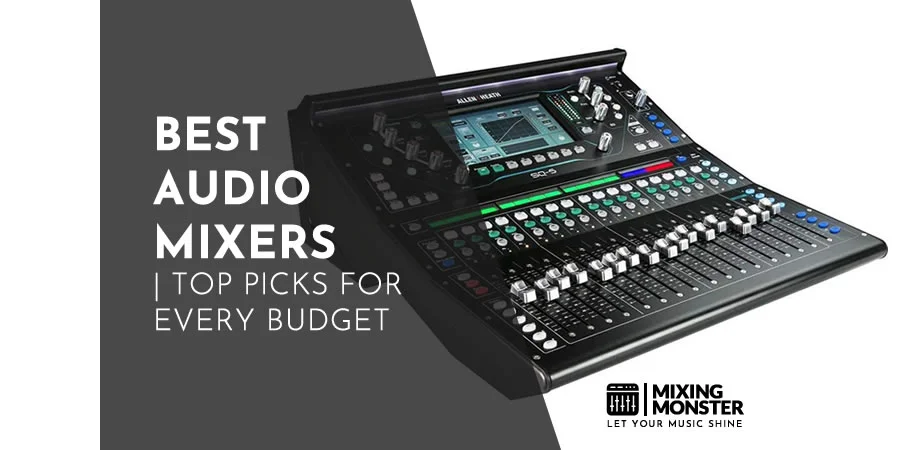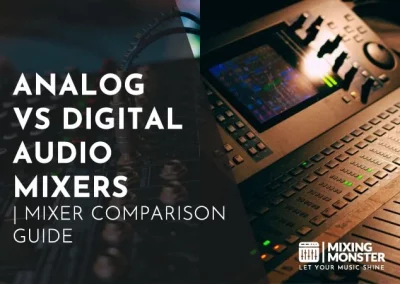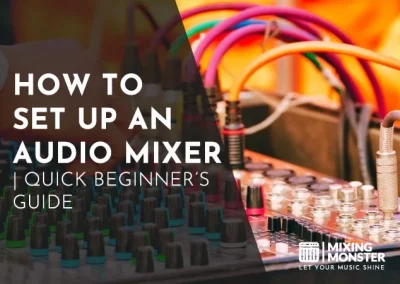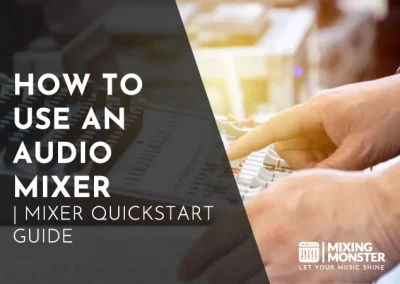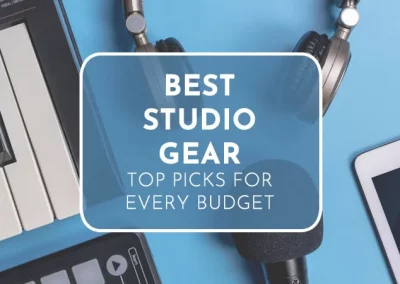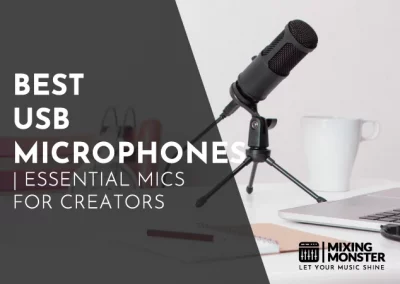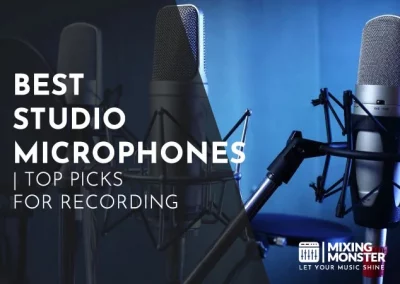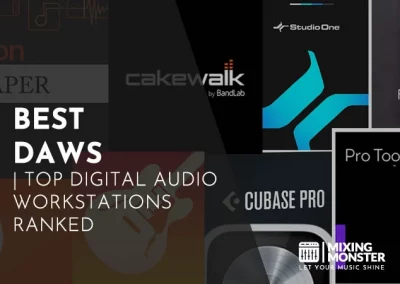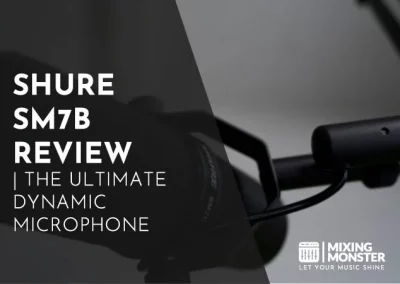Home > Blog > Studio Gear > Mixing Gear
Disclosure: Some of the links below are affiliate links, meaning that at no additional cost to you, we will receive a commission if you click through and make a purchase. Read our full affiliate disclosure here.
Audio mixers are must-haves for anyone serious about sound—whether you’re making music, running a podcast, working live events, or just tinkering in a home studio. Picking the best audio mixers can upgrade a basic audio setup, giving you more clarity and control than you’d expect from a pile of tangled cables.
The best audio mixers let you combine, tweak, and route multiple audio signals into one polished output. Musicians, sound engineers, broadcasters, and content creators use mixers to balance levels, add effects, and manage sound sources.
You’ll see analog mixers and digital mixers, each with its quirks—different sizes, channel counts, and features. The main things to look at? Number of channels, input/output options, built-in effects, compatibility, and ease of use. If you know what you need, you’ll have a harder time finding a mixer that fits your workflow.
Before buying anything, consider how you’ll use it, where it’ll live, and whether you need more flexibility. We dug into the top models—checking out their build, connections, and how they work in real life—to find the best audio mixers for most people.
KEYNOTES:
- In this article, you’ll find a comprehensive list of the best audio mixers on the market, combining analog and digital options.
- Audio mixers are categorized into 5 sections:
Best Entry-Level Audio Mixers
Best Home Studio Audio Mixers
Best Live Audio Mixers
Best Portable Audio Mixers
Best Professional Audio Mixers - Each section contains:
3 audio mixers
ordered by price (low > high) - In case you need a specific type of audio mixer, you might also be interested in:
Best Analog Mixers
Best Digital Mixers
Best Rack Mixers
Best PA Mixers
Best Summing Mixers
Best DJ Mixers
Best Podcast Mixers
Best Gaming Mixers
Our Top Picks – Best Audio Mixers
Best Entry-Level
Mackie
ProFX16v3

Best Home Studio
Solid State Logic
SiX
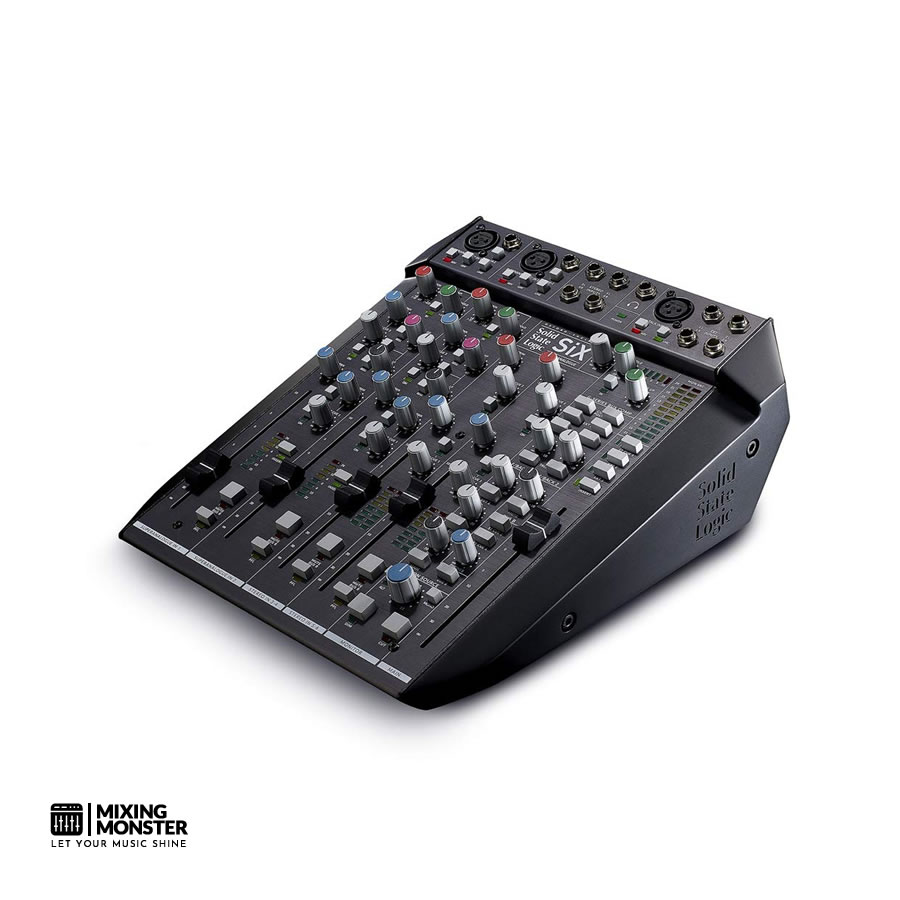
Best Live
Yamaha
MG20XU
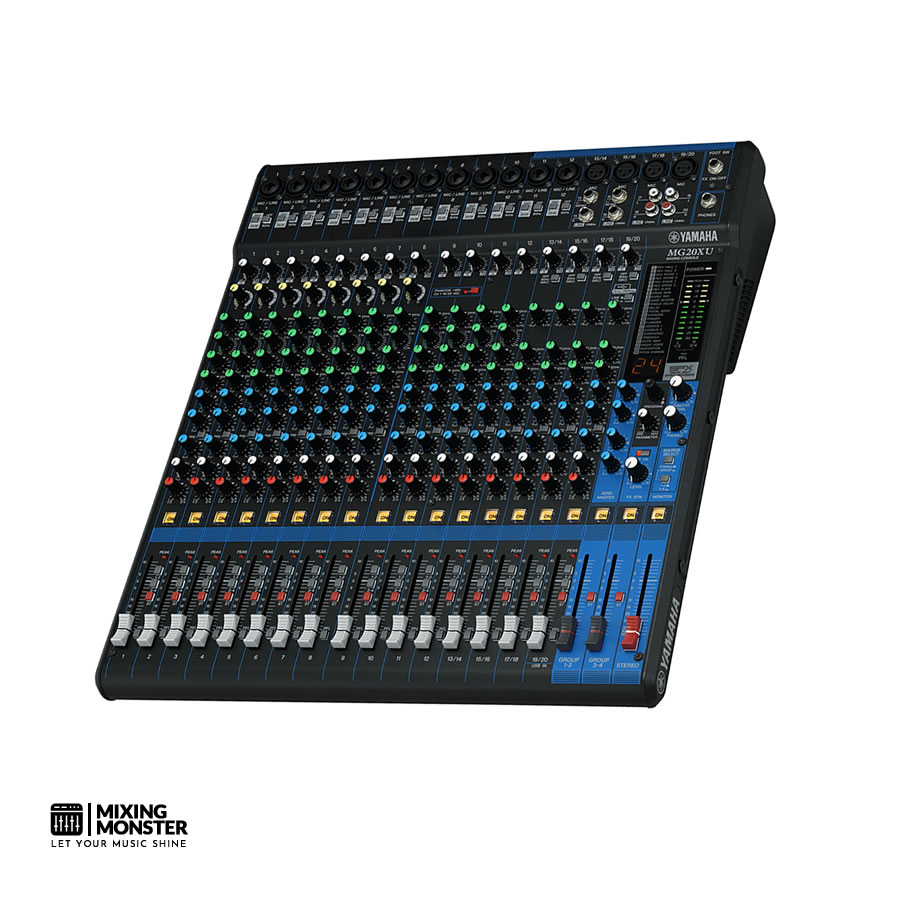
Best Portable
Behringer
X AIR XR18
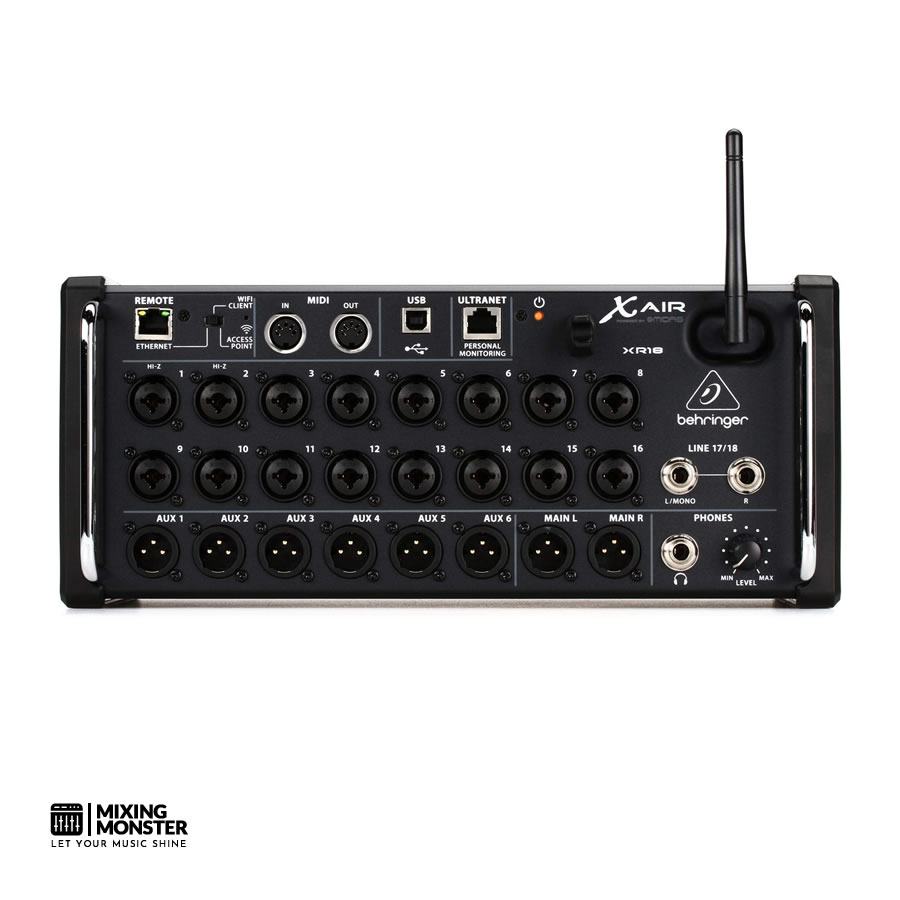
Best Professional
Allen & Heath
SQ5
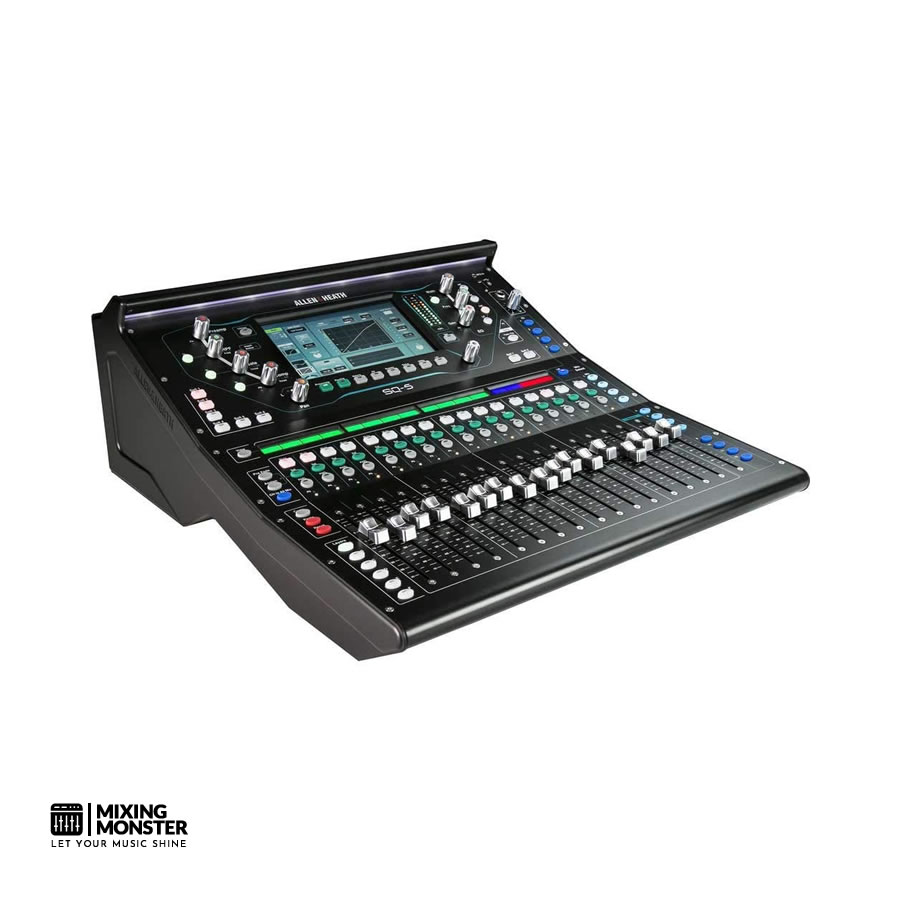
Table Of Contents
1. What Are The Best Audio Mixers?
Best Entry-Level Audio Mixers
Best Home Studio Audio Mixers
Best Live Audio Mixers
Best Portable Audio Mixers
Best Professional Audio Mixers
2. What Is An Audio Mixer?
3. Essential Accessories To Complement Your Audio Mixer
4. Audio Mixer Buying Guide
5. Finding Your Perfect Audio Mixer: Key Takeaways
FAQ

1. What Are The Best Audio Mixers?
We’ve gathered the best audio mixers to help you achieve clear, balanced sound for any project. There’s something here for every budget, whether you’re brand new or a seasoned pro.
Here Are Our Picks For The Best Audio Mixers:
Best Entry-Level Audio Mixers
1. Behringer Xenyx X1204 USB
Analog Mixer
Best For Versatile Entry-Level Mixing And Home Recording
2. Presonus StudioLive AR12c
Analog Mixer
Best For Home Studio Enthusiasts Seeking Versatile Analog-Digital Hybrid Mixing
3. Mackie ProFX16v3
Analog Mixer
Best For Live Performers And Podcasters Seeking Robust Entry-Level Mixing
Best Home Studio Audio Mixers
4. Tascam Model 12
Digital Mixer
Best For Home Studio Creators Requiring All-in-One Recording And Mixing
6. Solid State Logic SiX
Analog Mixer
Best For Home Studio Professionals Seeking Boutique Analog Quality In A Compact Mixer
Best Live Audio Mixers
9. Yamaha MGP32X
Analog Mixer
Best For Large Live Events And Venues Requiring Premium Mixing Power
Best Portable Audio Mixers
10. Behringer X AIR XR18
Digital Mixer
Best For Mobile Musicians And Engineers Needing Wireless, App-Based Mixing
11. Behringer X32 Compact
Digital Mixer
Best For Touring Engineers And Bands Requiring Powerful, Portable Digital Mixing
12. Behringer Wing Compact
Digital Mixer
Best For Advanced Portable Setups Demanding Cutting-Edge Digital Control
Best Professional Audio Mixers
13. Solid State Logic BiG SiX
Analog Mixer
Best For Boutique Studios And Professionals Demanding SSL Analog Sound With Modern Hybrid Features
15. Allen & Heath SQ5
Digital Mixer
Best For High-End Studios And Live Engineers Requiring Next-Gen Digital Mixing Power

Best Entry-Level Audio Mixers
#1 Behringer Xenyx X1204 USB
Best For Versatile Entry-Level Mixing And Home Recording
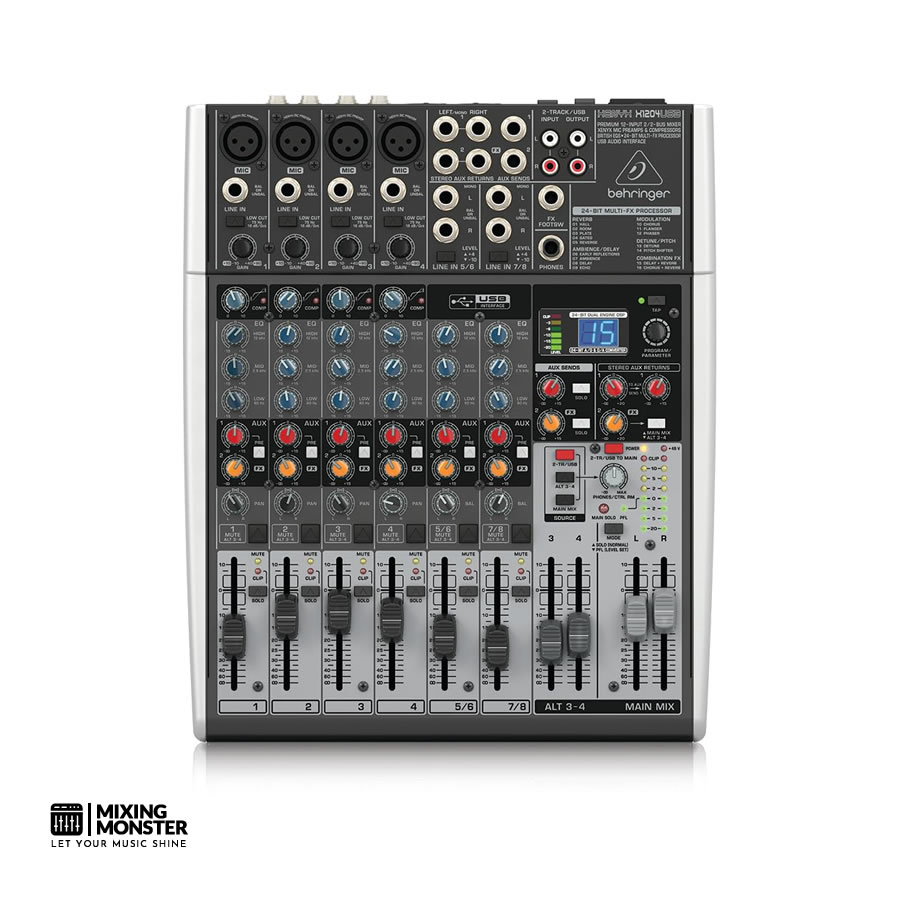
Overview:
The Behringer Xenyx X1204USB Mixer is a practical, beginner-friendly choice for setting up a home recording studio or running smaller live shows. When we tried it, the controls felt intuitive, and the connectivity made life easy—no fuss, no mess.
Built-in USB, classic British-style EQ, and effects keep things simple, but don’t forget the basics.
Pros:
- Super easy for first-timers
- It feels sturdy, fits on any desk
- Mic preamps sound clean, and the compression is useful
Cons:
- Not a ton of routing options
- USB output isn’t quite pro-level for recording
- FX controls are pretty barebones
Unique Selling Point:
The Behringer Xenyx X1204 wins points for its one-knob compressor and built-in USB interface. You plug it into your computer and start recording—no headaches.
Key Benefits:
- The setup is fast, and the interface won’t make your head spin.
- The compressor and EQ on each channel allow you to shape your sound easily.
- USB recording means less clutter and fewer cables to trip over.
Pricing:
| Average Price | ~ $239 |
Review:
The Behringer Xenyx X1204 USB Mixer felt approachable right out of the box—even if you’ve never mixed before. Setting up channels is quick, and the built-in compression made our spoken word recordings pop. Plugging it into a computer was a breeze; there was no weird driver drama.
Its strength is simplicity. We managed mics, instruments, and even background tracks without digging for a manual. The EQs responded nicely, and the onboard effects, while basic, did the job for a singer-songwriter setup.
The build feels solid. The faders are smooth, the knobs don’t wobble, and it survived a few bumps without a scratch. It’s small enough for tight spaces. The one-knob compressor on every mono channel cleaned up our streaming vocals, a rare bonus at this price point.
It’s not perfect. You might want more routing or better USB audio quality if you’re a power user. But for podcasting, streaming, or rehearsals, it holds up. We even ran some external effects through the aux sends—they worked fine, but you’ll hit the limits of the FX section pretty quickly.
The Behringer Xenyx X1204 USB Mixer is a smart pick to start mixing, podcasting, or recording at home without drowning in complexity or cost. For a compact, reliable, and genuinely easy-to-use mixer, it does what most beginners need.
#2 Presonus StudioLive AR12c
Best For Home Studio Enthusiasts Seeking Versatile Analog-Digital Hybrid Mixing

Overview:
The Presonus StudioLive AR12c is an entry-level audio mixer blending analog warmth with digital flexibility. It’s aimed at home studios, small bands, and podcasters who want a user-friendly experience but still crave some pro features.
We found the workflow intuitive. Moving from basic mixing to more advanced setups is easy without feeling lost.
Thanks to its built-in USB-C audio interface and onboard SD recording, the StudioLive AR12c lets you capture high-quality audio without a headache. The construction feels solid, and the connectivity options cover almost any scenario you’d hit in a budding studio.
Pros:
- Hybrid analog-digital workflow
- Intuitive interface for beginners
- Built-in USB-C audio interface
- Onboard SD card recording
- Solid, durable build quality
Cons:
- Slightly larger footprint for compact setups
- No motorized faders
- Limited onboard effects compared to higher-end models
- It may be overkill for ultra-basic needs
Unique Selling Point:
The Presonus StudioLive AR12c‘s real magic lies in its hybrid design. It combines analog mixing and digital recording, so you don’t have to pick sides if you’re starting.
Key Benefits:
- Seamless Analog-to-Digital Integration: Record, mix, and stream with the built-in USB-C interface. It’s perfect for anyone dipping their toes into digital audio production.
- Onboard SD Recording: Capture live performances or rehearsals straight to an SD card. No computer is needed—just hit record.
- User-Friendly Controls: Clear labeling and an ergonomic layout help beginners pick up mixing basics faster than expected.
Pricing:
| Average Price | ~ $499 |
Review:
When we set up the Presonus StudioLive AR12c, it immediately felt approachable, especially for entry-level users. The mixer sports a familiar analog layout with tactile controls, so anyone moving up from simpler gear won’t feel out of place.
Adding a USB-C audio interface changes the game for home studios. We recorded multitrack sessions straight into our DAW—no drama, no extra hoops to jump through.
The sound comes through clean and transparent. The preamps provide enough headroom for most mics and instruments, which is all you need at this level.
During testing, we were impressed by the onboard SD card recording. We captured live sessions without a computer, which makes life easier in rehearsal spaces or on the go.
Bluetooth connectivity is a nice touch. We could toss backtracks or reference material from a phone or tablet, which is handy for practice or jamming.
The Presonus StudioLive AR12c is bigger than some compact mixers, but the robust build and flexible I/O make up for the space it takes. The onboard effects are basic compared to pricier models, but the essentials are there for most users.
We didn’t miss motorized faders at this price point. The physical controls give enough tactile feedback to keep things fun and hands-on.
#3 Mackie ProFX16v3
Best For Live Performers And Podcasters Seeking Robust Entry-Level Mixing

Overview:
The Mackie ProFX16v3 offers professional sound and rugged reliability to musicians, podcasters, and small venues. It is user-friendly and strikes a nice balance between features and simplicity.
This mixer offers a range of built-in effects and a USB interface for straightforward recording. It’s a solid choice for anyone ready to jump into live sound or home recording without getting bogged down in details.
The compact design and clear layout help new users get started quickly. You won’t have to fumble through menus or scratch your head over connections.
Pros:
- High-quality Onyx mic preamps
- Built-in GigFX effects engine
- USB recording and playback
- Solid, road-ready construction
- Intuitive layout for beginners
Cons:
- No onboard SD recording
- The effects engine is not customizable
- Slightly limited EQ options
- No Bluetooth connectivity
Unique Selling Point:
The Mackie ProFX16v3 stands out by pairing professional Onyx preamps with the GigFX effects engine. This combo gives entry-level users a reliable platform for both live and studio gigs.
Key Benefits:
- Professional-Grade Preamps: Onyx preamps deliver clean, low-noise performance. They’re great for vocals and instruments where clarity matters.
- Integrated Effects: The GigFX engine packs in 24 built-in effects. Beginners can shape their sound without hunting for extra gear.
- USB Connectivity: You can record and playback audio straight via USB, and connecting to your computer setup is a breeze.
Pricing:
| Average Price | ~ $549 |
Review:
From the first session with the Mackie ProFX16v3, we saw why many entry-level users love it. The build feels sturdy—ready for the chaos of both home and gig life.
The setup was quick. All the controls and connections are clearly labeled so we can mix and record quickly. The Onyx preamps delivered impressive sound quality, with clarity and headroom that’s tough to find at this price. We liked the built-in effects, adding depth to vocals and instruments without hassle.
Dialing in effects feels easy, though we wish for more customization beyond the presets. Maybe that’s just us being picky, but it’d be nice.
USB connectivity makes recording into a DAW or streaming live content straightforward. The Mackie ProFX’s interface stays simple, allowing users to balance levels, tweak EQ, and manage effects without feeling overwhelmed.
It doesn’t have onboard SD recording or Bluetooth, but at this price point, that’s not shocking. The EQ section is limited compared to higher-end models, but it covers the basics perfectly for most starting.
Best Home Studio Audio Mixers
#4 Tascam Model 12
Best For Home Studio Creators Requiring All-in-One Recording And Mixing
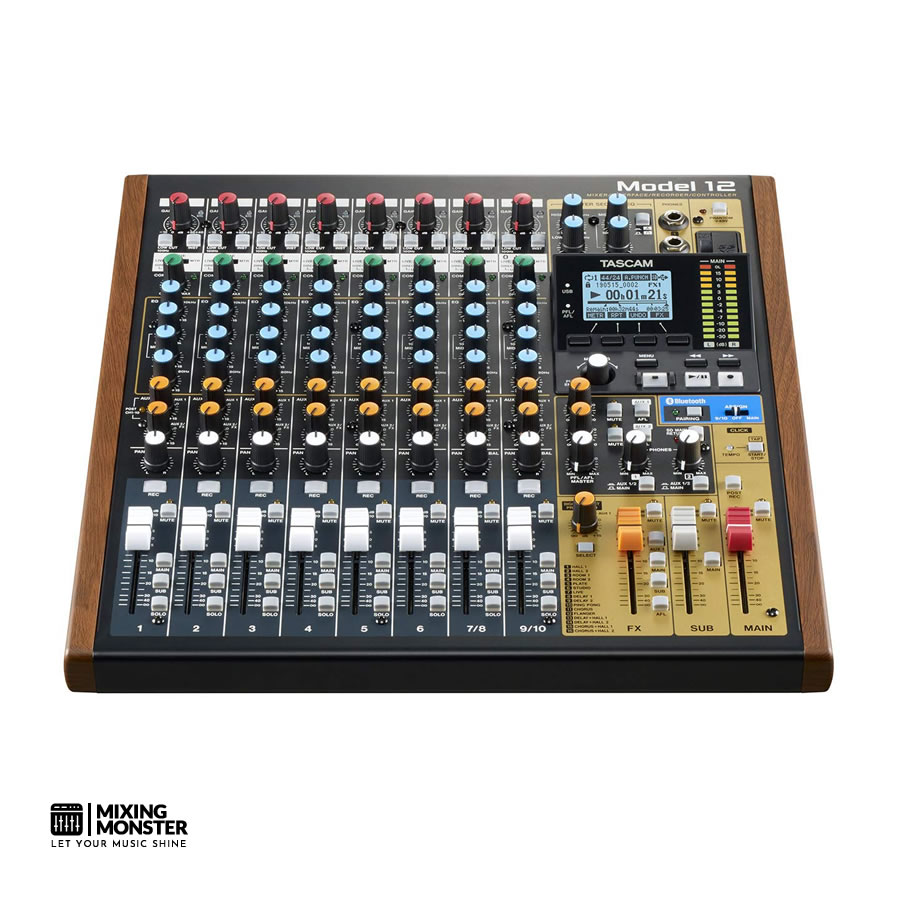
Overview:
The Tascam Model 12 is a compact mixer for home studios and content creators. Its integrated multitrack recorder, DAW control, and USB audio interface make it a versatile centerpiece for any small setup.
The Model 12 streamlines recording with tactile controls and an intuitive workflow. We spent less time fiddling with menus and more time making music.
With onboard effects and flexible routing, it suits musicians, podcasters, and small bands who want a reliable, feature-packed solution.
Pros:
- Integrated 12-track multitrack recorder
- USB audio interface with DAW control
- Onboard effects and compressor
- Compact, user-friendly design
- Flexible routing and monitoring options
Cons:
- Limited number of input channels compared to larger mixers
- No motorized faders
- Some menu navigation is required for advanced features
- Effects section less robust than dedicated units
Unique Selling Point:
The Tascam Model 12 stands out for its seamless blend of multitrack recording, USB interface, and DAW control. It’s a true all-in-one for home studio users who want everything in one box.
Key Benefits:
- Standalone Multitrack Recording: Record up to 12 tracks straight to an SD card—no computer required. This method is excellent for quick ideas or full sessions.
- Full DAW Integration: Use it as a control surface and audio interface, bridging hardware and software in your workflow.
- Built-In Effects and Compression: Add polish to tracks with onboard effects and channel compression as you record or mix.
Pricing:
| Average Price | ~ $599 |
Review:
We set up the Tascam Model 12 in our studio, and honestly, it didn’t take long to see how much value it brings. Recording multitrack sessions directly to an SD card—no computer boot-up—felt liberating for quick demos and spontaneous ideas.
The tactile controls and familiar mixer layout helped us dive in quickly. We liked how the Model 12 combines that analog feel with digital flexibility.
Using the USB interface, we plugged right into our DAW and took advantage of the DAW control features. Managing sessions and transport controls directly from the mixer sped up our workflow and made recording more hands-on and fun.
The onboard effects and compressors surprised us with their quality for an entry-level mixer. Sure, they’re not as deep as dedicated processors, but they’re enough to give some vocals, guitars, and drums shine in real time.
Flexible routing lets us set up custom headphone mixes and send signals to outboard gear. That versatility came in handy during more involved sessions.
The Tascam Model 12‘s compact size makes it perfect for small studios or desktop setups. The available inputs are enough if you’re a solo artist, duo, or podcast team.
Some advanced features require menu diving, but the learning curve isn’t too steep—mainly if you’ve used digital mixers.
#5 Mackie Onyx24
Best For Home Studios Demanding High-Quality Analog Sound And Extensive Channel Count

Overview:
The Mackie Onyx24 is an analog mixer built for home studios with many channels and crystal-clear sound. We loved the Onyx preamps—they deliver clean, detailed audio—and the sturdy construction will last years.
With flexible routing, a built-in USB multitrack interface, and a comprehensive EQ section, it’s a solid choice for producers, bands, and content creators. The straightforward layout makes it easy for newcomers to start mixing right away.
Pros:
- Pristine Onyx preamps for exceptional sound quality
- 24 channels for larger setups
- Built-in USB multitrack recording
- Robust build and professional design
- Easy-to-use interface
Cons:
- A larger footprint may not suit small spaces
- No onboard effects
- No motorized faders
- Higher price point for entry-level users
Unique Selling Point:
The Mackie Onyx24‘s real draw is its high channel count paired with those industry-leading Onyx preamps. You get pro-grade analog sound and USB multitrack recording all in one board.
Key Benefits:
- High Channel Count: Handles big sessions, full bands, or complex home studio needs efficiently.
- Exceptional Audio Clarity: Onyx preamps deliver low-noise, high-headroom sound, so you catch every nuance.
- USB Multitrack Recording: Record every channel straight into your DAW for detailed mixing later.
Pricing:
| Average Price | ~ $950 |
Review:
The Mackie Onyx24 made a strong impression in our home studio. With 24 channels, we managed multi-instrument sessions, full bands, and even complex podcast setups without breaking a sweat.
The Onyx preamps are a highlight—they gave us clarity and warmth that felt like something from pricier gear. Vocals and acoustic instruments, especially, came through rich and detailed.
Recording every channel separately into our DAW with the built-in USB interface opened up many options for editing and mixing after the fact. We tested it on both Windows and Mac and had no hiccups.
The layout is intuitive, with clearly labeled controls and logical signal flow. Adjusting levels, EQ, and routing on the fly—even in busy sessions—felt straightforward.
We did notice the lack of onboard effects, but the clean signal path and solid EQ section made up for it. Using plugins or outboard gear, you won’t miss the built-in effects anyway.
The Mackie Onyx 24‘s size could be a challenge in tight spaces. Still, the extra inputs and flexibility are worth it if needed. The build feels solid as if it could handle years of regular use in a busy home studio.
#6 Solid State Logic SiX
Best For Home Studio Professionals Seeking Boutique Analog Quality In A Compact Mixer

Overview:
The Solid State Logic SiX brings SSL’s legendary analog sound and build quality to home studios, all in a tiny package. We found it perfect for producers and musicians who want high-end audio and flexible routing without taking up much space.
SSL preamps, channel compressors, and a master bus compressor give the SiX a sonic polish that’s tough to beat. Its intuitive layout and pro features make it accessible even to newcomers to SSL gear.
Pros:
- Boutique SSL preamps and compressors
- Master bus compressor for polished mixes
- Ultra-compact and robust design
- Flexible routing and monitoring options
- High headroom and low noise floor
Cons:
- A limited number of channels
- Premium price point
- No onboard effects beyond compression
- The steeper learning curve for beginners
Unique Selling Point:
The Solid State Logic SiX is all about boutique SSL analog circuitry and its master bus compressor. It gives you world-class sound and mixing tools in a compact format that fits on almost any desk.
Key Benefits:
- Legendary SSL Sound: Capture your recordings with the warmth and clarity SSL is famous for.
- Professional Compression: Shape your mixes with channel and master bus compressors, which are significant for that polished, radio-ready vibe.
- Compact Versatility: This product offers high-end studio features in a small, desktop-friendly package, perfect for those with limited space.
Pricing:
| Average Price | ~ $1299 |
Review:
Our time with the Solid State Logic SiX in a home studio impressed us. Straight out of the box, you can tell the build quality is top-notch—SSL didn’t cut corners here.
The SSL preamps brought detail and warmth to vocals and instruments, immediately giving our recordings a professional sheen. It’s hard to overstate how good it sounds for such a small unit.
Channel compressors and the classic SSL master bus compressor set the SiX apart. We shaped dynamics and glued mixes in ways usually reserved for much bigger (and more expensive) consoles.
Routing options, like dual headphone outputs and flexible Monitoring, made it easy to adapt the mixer to whatever recording or mixing scenario we encountered.
The limited channel count means the SiX isn’t for big ensembles, but it’s perfect for solo artists, duos, and producers who care more about sound quality than sheer input numbers. The learning curve is steeper if you’re new to SSL, but the intuitive layout and clear labeling helped us get up to speed quickly.
The lack of onboard effects beyond compression stands out, but the SSL SiX‘s stellar sound quality and professional compression more than made up for it.
For home studio users who rely on plugins or external effects, the clean signal path helps. Nothing gets in the way of that classic SSL sound!
Best Live Audio Mixers
#7 Yamaha MG20 XU
Best For Live Sound Engineers Needing Reliable, High-Channel Mixing With USB Recording

Overview:
The Yamaha MG20 XU is a robust analog mixer built for live sound. It offers 20 channels and integrated USB audio interfacing.
The MG20 XU’s build quality and intuitive layout make it ideal for live events, from small gigs to bigger venues. Studio-grade preamps, onboard effects, and flexible routing give it the reliability and sound quality that live engineers need.
Its USB connectivity lets you record performances or stream live audio without hassle, which is a big deal if you want to keep things simple but professional.
Pros:
- 20 input channels for versatile setups
- High-quality D-PRE mic preamps
- Built-in SPX digital effects
- USB connectivity for recording/streaming
- Rugged, road-ready construction
Cons:
- No motorized faders
- Lacks advanced digital features
- The effects section is less customizable
- Larger footprint for mobile rigs
Unique Selling Point:
The Yamaha MG20 XU combines a high channel count, studio-grade preamps, and integrated USB audio. It’s powerful but still accessible for live sound mixing and recording.
Key Benefits:
- Versatility for Live Setups: You can handle bands, conferences, and events with 20 channels and flexible routing.
- Professional Sound Quality: D-PRE preamps give you clear, natural audio, even when tricky.
- Easy Recording and Streaming: The USB interface lets you record or stream performances directly.
Pricing:
| Average Price | ~ $749 |
Review:
We tested the Yamaha MG20 XU live, and its strengths immediately stood out. The 20 input channels gave us loads of flexibility for full bands, multiple vocalists, and various instruments.
The D-PRE preamps delivered a clean, transparent sound. That clarity is crucial for live audio—it can make or break a show.
The built-in SPX effects are a real asset for live mixing. Whether we added reverb to vocals or a touch of delay to instruments, the effects engine was easy to use and enhanced the mix.
Sure, the effects section isn’t as customizable as some digital mixers, but it covers the essentials for most shows. We also liked how rugged the MG20 XU feels. The chassis is solid and seems ready for travel demands and frequent use.
Setting up and using the mixer felt intuitive, even for folks new to Yamaha’s interface. That meant we could focus on the mix instead of troubleshooting.
The integrated USB of the Yamaha MG20 XU made it simple to record live sets straight to a laptop or stream audio for online events. Venues and bands looking to capture performances without extra gear will appreciate this.
#8 Presonus StudioLive 16.0.2 USB
Best For Compact Live Venues Needing Digital Flexibility And Multitrack Recording

Overview:
The Presonus StudioLive 16.0.2 USB is a compact digital mixer with advanced features and flexible mixing. Its 16-channel layout and digital workflow make it an excellent fit for small to medium venues, houses of worship, and mobile gigs.
You get multitrack USB recording, recallable scenes, and built-in effects, streamlining live mixing and post-show production. The mixer’s portability and user-friendly interface mean experienced engineers and newcomers can get up to speed quickly.
Pros:
- Digital recall and scene memory
- Multitrack USB recording
- Built-in effects and processing
- Portable, lightweight design
- Intuitive control surface
Cons:
- Fewer physical channels than analog counterparts
- The learning curve for digital features
- No motorized faders
- The display is basic for a digital mixer
Unique Selling Point:
The Presonus StudioLive 16.0.2 USB stands out with its digital mixing flexibility, scene recall, and multitrack USB recording. It’s a compact yet versatile tool for live audio pros who must pack light.
Key Benefits:
- Digital Scene Recall: Save and instantly recall mix settings for different events or bands.
- Multitrack Recording: Capture every channel separately for post-show mixing or archiving.
- Onboard Effects and Processing: Enhance live sound with built-in reverbs, delays, and dynamics processing.
Pricing:
| Average Price | ~ $1099 |
Review:
The Presonus StudioLive 16.0.2 USB impressed us in live audio tests, especially in smaller venues and mobile setups. Its compact size was a massive plus for gigs where space is tight, but it didn’t skimp on features.
We could set up fast, and the digital workflow let us save mix scenes for different acts—a lifesaver during quick changeovers. The multitrack USB recording feature proved invaluable since we could record each input channel separately and remix or edit performances later.
Bands wanting live recordings or venues offering post-event production will love this. Built-in effects and processing are surprisingly robust for a mixer of this size.
We easily added reverb, delay, and compression to various channels without needing extra gear. The display is basic but functional and easy enough to use with some practice.
If you’re new to digital mixers, there’s a learning curve. Still, we found the interface approachable, especially after a few tries.
The lack of motorized fader isn’t shocking at this price, but the tactile controls are satisfying. For anyone who wants digital power and flexibility in a portable format, the StudioLive 16.0.2 USB is a solid pick.
#9 Yamaha MGP32X
Best For Large Live Events And Venues Requiring Premium Mixing Power

Overview:
The Yamaha MGP32X is a flagship analog mixer for large live events and venues that need serious channel capacity and top-notch sound. Its 32 channels, high-end preamps, and hybrid digital processing make it an excellent fit for complex live setups.
Advanced features like dual digital effects engines and flexible connectivity give the MGP32X power and refinement. It feels rugged, and the layout makes sense even in high-pressure environments.
Pros:
- 32 input channels for large setups
- Studio-grade D-PRE preamps
- Dual digital effects processors
- Hybrid analog-digital features
- Durable, professional build
Cons:
- Large and heavy for transport
- Higher price point
- No multitrack USB recording
- No motorized faders
Unique Selling Point:
The Yamaha MGP32X stands out because it blends high channel count, premium analog sound, and advanced digital effects. It’s built for demanding live audio environments where you can’t compromise.
Key Benefits:
- Handles Large Events: 32 channels mean you can cover big bands, orchestras, or multi-act events.
- Superior Sound Quality: D-PRE preamps and advanced processing help make every source sound its best.
- Dual Effects Engines: Add creative and corrective effects in real-time with dedicated processors.
Pricing:
| Average Price | ~ $1839 |
Review:
The Yamaha MGP32X is a powerhouse for live audio mixing. We used it at large events and saw firsthand why it has such a good reputation.
With 32 input channels, we could handle complex setups with multiple performers, instruments, and playback sources. The D-PRE preamps offered clarity and headroom, so everything from vocals to percussion stood out.
The dual digital effects engines are a real highlight. We applied lush reverbs, delays, and modulation effects to channels or groups, adding polish and creativity to the sound.
The hybrid analog-digital design combines analog’s reliability and hands-on control with digital flexibility. The build quality is excellent, ready for the rough-and-tumble of touring and frequent setups.
Despite its size, the controls are laid out logically. We made quick adjustments even during fast-paced shows.
The Yamaha MGP32X doesn’t have multitrack USB recording, but its stereo recording capability is handy for capturing board mixes. No motorized faders exist, but the smooth, responsive controls make manual mixing enjoyable.
Best Portable Audio Mixers
#10 Behringer X AIR XR18
Best For Mobile Musicians And Engineers Needing Wireless, App-Based Mixing

Overview:
The Behringer X AIR XR18 is a compact, rackmount digital mixer that combines portability with wireless control. We loved how the XR18’s app-based interface and built-in Wi-Fi let us mix from anywhere in the venue on a tablet or laptop.
It packs 18 inputs, solid-sounding MIDAS preamps, and integrated multitrack USB recording. The XR18 is perfect for bands, small venues, and mobile sound engineers who want flexibility but don’t want to skimp on features.
Its small footprint and deep feature set make it a go-to for portable audio mixing.
Pros:
- Wireless mixing via app
- 18 inputs with MIDAS preamps
- Multitrack USB recording
- Compact and lightweight
- Built-in effects and processing
Cons:
- Requires external device for control
- The learning curve for app interface
- No physical faders
- Wi-Fi stability can vary in crowded environments
Unique Selling Point:
The Behringer XR18 stands out for its fully wireless, app-controlled mixing. You can tweak your mix from anywhere in the room—no need to stay glued to a console.
Key Benefits:
- True Portability: Small size and wireless control are great for mobile gigs and tight setups.
- Remote Mixing: Adjust levels, EQ, and effects from wherever you are using a tablet or laptop.
- Multitrack Recording: Capture all channels simultaneously for editing or live streaming later.
Pricing:
| Average Price | ~ $509 |
Review:
When we took the Behringer X AIR XR18 out for a mobile gig, its portability and wireless control changed how we worked. Setting up was a breeze: we just put the XR18 on stage, powered it up, and connected our tablet to its Wi-Fi.
We walked around the venue, made real-time tweaks, and heard what the audience would listen to. This was not possible with old-school mixers.
The 18 MIDAS-designed preamps gave us a surprisingly clear and punchy sound for this price range. Vocals, guitars, keyboards—everything came through clean and professional.
We didn’t need to haul extra outboard gear thanks to the built-in reverb, delays, and dynamics processing. The multitrack USB recording was a lifesaver.
We captured every channel straight to our laptop for mixing later, which is a big deal for bands wanting live recordings or engineers who like to polish things post-show. The app interface took a minute to get used to, but once we got the hang of it, the flexibility made up for not having physical faders.
Of course, you’ll need an external device to control the Behringer X AIR XR18, and Wi-Fi can get sketchy in crowded RF environments. Still, those are minor trade-offs for the value you get in return.
#11 Behringer X32 Compact
Best For Touring Engineers And Bands Requiring Powerful, Portable Digital Mixing
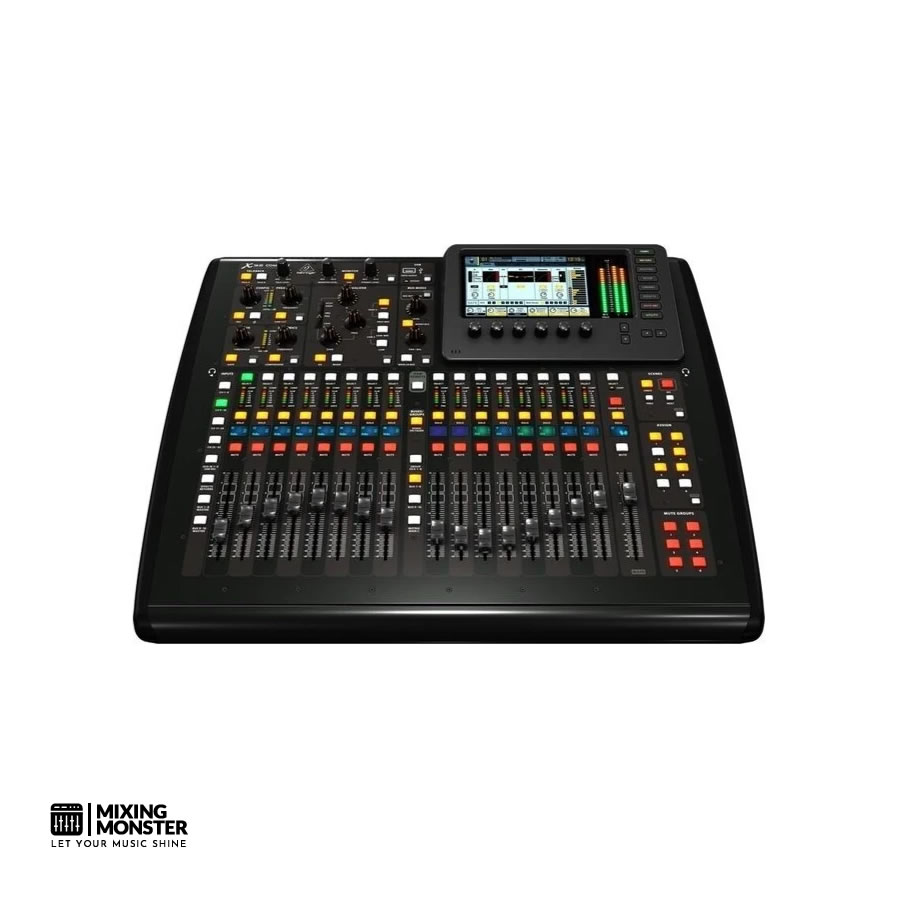
Overview:
The Behringer X32 Compact is a trimmed-down version of the popular X32 digital mixer. It packs pro features into a more portable form and strikes a sweet spot between size and power, perfect for mobile gigs and venues where space is tight.
With 40 input channels, motorized faders, and advanced effects, it provides the flexibility and sound quality you’d expect for demanding portable setups. Its intuitive interface and challenging build have made it a staple for many live sound pros.
Pros:
- 40 input channels in a compact chassis
- Motorized faders for precise recall
- Extensive onboard effects and routing
- Multitrack USB recording
- Rugged, road-ready design
Cons:
- Heavier than ultra-compact models
- The learning curve for the complete feature set
- Limited physical inputs on the surface
- No built-in Wi-Fi (needs external router for wireless control
Unique Selling Point:
The X32 Compact shines by combining pro-level digital mixing with portability. It’s a real workhorse for mobile and touring audio setups.
Key Benefits:
- High Channel Count: Handles large bands or complex events without getting bulky.
- Scene Recall and Automation: Motorized faders and digital workflow make switching between acts a breeze.
- Integrated Multitrack Recording: Record every input for post-production or live streaming.
Pricing:
| Average Price | ~ $1649 |
Review:
We’ve tested the Behringer X32 Compact in various portable situations, and it has been a solid performer. Its size makes it easy to move around, but you still get the power and flexibility of a much bigger board.
We used it for band gigs and corporate events where space and quick setup mattered. The motorized faders and scene recall were lifesavers, letting us save and instantly recall mixes for different acts or venues. This is huge during festivals or busy events with lots of performers. The sound quality has always impressed us thanks to high-res converters and flexible routing.
We leaned on the onboard effects and processing, so we didn’t need to drag along extra gear. Multitrack USB recording worked smoothly, letting us record shows for editing or streaming later.
The control surface has fewer physical inputs than the full-sized Behringer X32, but digital patching makes complex setups manageable. The only downside is the lack of built-in Wi-Fi, so we had to bring our router for wireless control.
Once connected, though, remote mixing via tablet or laptop worked like a charm on the X32 Compact and made things even more portable.
#12 Behringer Wing Compact
Best For Advanced Portable Setups Demanding Cutting-Edge Digital Control

Overview:
The Behringer WING Compact is a next-gen digital mixer built for audio pros who want maximum flexibility and innovation in a portable box. We found the WING Compact’s touchscreen, customizable workflow, and deep digital network integration to be real game-changers for mobile setups.
With 48 input channels, advanced routing, and a modular interface, the WING Compact brings studio-level power to touring, broadcast, or high-end portable gigs.
Pros:
- Large touch screen with intuitive UI
- 48 input channels and flexible routing
- Deep integration with Dante, AES50, and other networks
- Customizable fader banks and controls
- High-quality effects and processing
Cons:
- Higher price point
- Steeper learning curve for new users
- Requires external devices for remote control
- Overkill for basic portable needs
Unique Selling Point:
The WING Compact sets itself apart with its advanced digital workflow—touchscreen, customizable controls, and network connectivity—all in portable form.
Key Benefits:
- Ultimate Flexibility: 48 channels and modular routing can handle any portable or touring gig.
- Touchscreen Control: Fast, intuitive navigation and customization make live mixing more efficient.
- Network Integration: Connect to Dante, AES50, and more for complex digital audio rigs.
Pricing:
| Average Price | ~ $2799 |
Review:
When we first set up the Behringer WING Compact, we could tell this mixer was built for folks who want the latest digital tech in a portable package. The big touchscreen and customizable workflow let us dial in precisely what we needed, whether for a live band, a touring show, or a broadcast setup on the move.
With 48 input channels and advanced routing, we could tackle even the most complicated portable events. Integrating digital audio networks like Dante and AES50 made expanding our system or hooking up to other pro gear easy—super handy during multi-venue tours and high-end gigs.
The modular fader banks and assignable controls let us customize the mixer’s surface to our workflow. That kind of customization, plus the touchscreen, sped up our work and made on-the-fly tweaks feel natural—even when things got hectic.
The WING Compact‘s effects and processing are top-notch, rivaling much bigger and pricier consoles. Sure, the price and learning curve are higher than most portable mixers, but it’s worth the investment for users who want the latest features and future-proof flexibility.
Best Professional Audio Mixers
#13 Solid State Logic BiG SiX
Best For Boutique Studios And Professionals Demanding SSL Analog Sound With Modern Hybrid Features
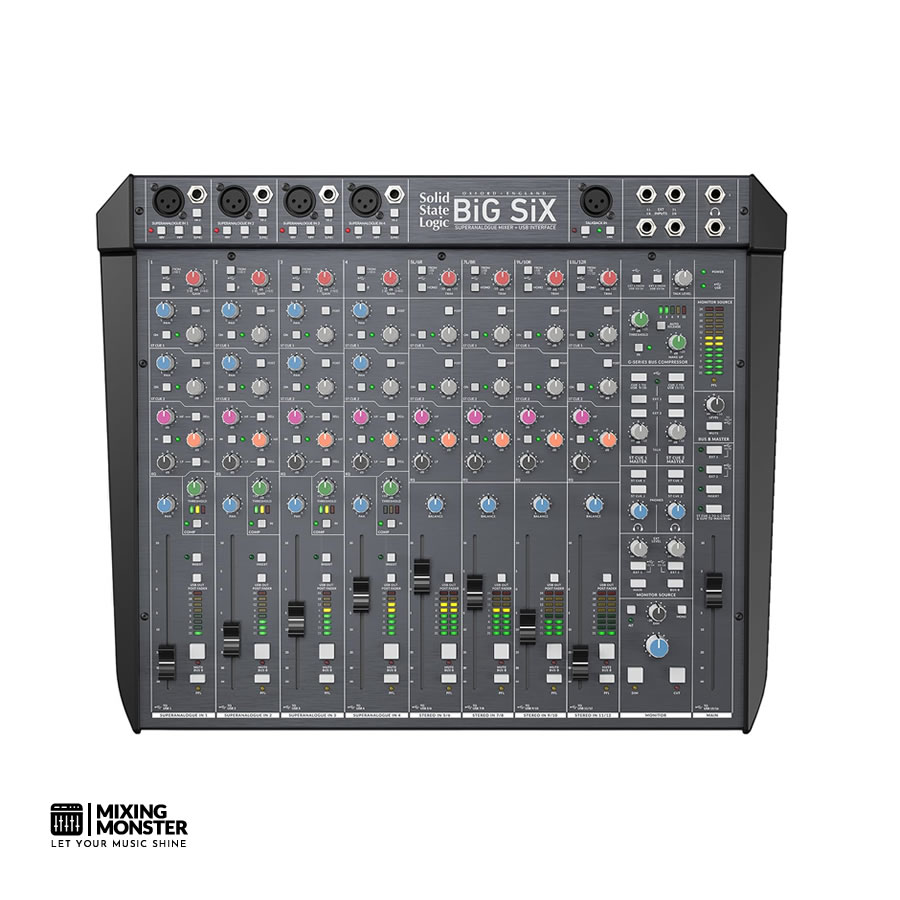
Overview:
The Solid State Logic BiG SiX blends SSL’s iconic sonic character with modern hybrid workflow tools. In our hands, it felt like the answer for studios and pros who need that analog warmth of SSL’s famous bus compressor and smooth USB integration for DAW work.
The mixer’s routing, high-headroom preamps, and onboard EQ make it the heart of any pro studio or streaming rig. Don’t let its size fool you—it packs serious control and sound quality.
Pros:
- Classic SSL analog sound and bus compressor
- High-quality preamps and EQs
- Integrated 16-channel USB audio interface
- Flexible routing and Monitoring
- Robust build quality
Cons:
- Limited channel count compared to larger desks
- Higher price point
- No onboard digital effects
- Not motorized
Unique Selling Point:
The SSL BiG SiX stands out by pairing SSL’s revered analog circuitry and bus compression with a full-featured USB audio interface. It’s a rare all-in-one for hybrid studios.
Key Benefits:
- World-Class Analog Sound: Get that SSL warmth and clarity on every track.
- Hybrid Workflow: Jump between analog mixing and DAW production with 16-channel USB audio.
- Master Bus Compression: Add that signature SS” “gl”e” to your mixes in seconds.
Pricing:
| Average Price | ~ $2699 |
Review:
We fired up the SSL BiG SiX in the studio and instantly heard that unmistakable SSL sound—rich, punchy, and detailed. The preamps and EQs gave vocals and drums a musical sheen, and the SSL bus compressor tightened our mixes just as we hoped.
Despite its compact footprint, the BiG SiX feels like a pro console shrunk down for your desk. The hybrid workflow is what won us over. Switching between analog mixing and DAW production with the 16-channel USB interface felt effortless.
Tracking, summing, and mixing became easier, and we got the best analog warmth and digital flexibility. The routing options are deep, so setting up monitoring, cue mixes, or outboard processing is straightforward.
We loved the tactile controls and the solid, confidence-inspiring build. It doesn’t have as many channels as a giant desk, but it’s just right for most pro project studios, podcasts, or hybrid work. The lack of onboard digital effects nudged us back to the core SSL sound and our favorite plugins in the DAW.
It’s not motorized, but the hands-on workflow is part of the appeal. If you want classic analog sound with modern DAW integration, the SSL BiG SiX brings something special. It’ll level up just about any studio.
#14 Midas M32R Live
Best For Touring Professionals And Studios Needing Premium Digital Mixing And Live Integration

Overview:
The Midas M32R Live is a compact digital mixer for serious touring, live sound, and studio work. We put it through its paces, and its Midas preamps, effects, and digital routing options made it a real standout for demanding audio pros.
Motorized faders, a bright color display, and multitrack USB recording bring flagship features to a portable box. The build is tough, and the workflow is intuitive enough to keep up with the pace of the road or the studio.
Pros:
- Premium Midas preamps and converters
- Motorized faders and digital recall
- Comprehensive onboard effects
- 32-channel USB audio interface
- Durable, tour-ready construction
Cons:
- The steeper learning curve for beginners
- Heavier than ultra-portable mixers
- Requires external device for wireless control
- Limited onboard physical outputs
Unique Selling Point:
The Midas M32R Live‘s magic is in its blend of top-tier Midas preamps, advanced digital features, and multitrack USB recording—all in a chassis ready for the road.
Key Benefits:
- Professional-Grade Audio: Midas preamps capture every detail with clarity and transparency.
- Digital Automation: Motorized faders and scene recall easily handle complex shows and sessions.
- Versatile Connectivity: Record, mix, and route audio with 32-channel USB and flexible I/O.
Pricing:
| Average Price | ~ $2799 |
Review:
We set up the Midas M32R Live in different rigs—on tour and in the studio—and it quickly became the hub of our audio world. The Midas preamps sound fantastic: clean, musical, and precise, so every nuance comes through.
The digital interface might initially look intimidating, but it feels natural after a while. The color display makes channel and effects navigation painless.
Motorized faders and scene recall are game-changers. We saved full-show setups and brought them back with one button, which saved us during hectic festival gigs and multi-band nights. This automation helped us stay creative in the studio instead of getting bogged down in tweaks.
The onboard effects are deep and sound solid—reverbs, delays, dynamics, you name it. We could record multitrack sessions straight to our DAW over USB, which is perfect for live recordings and studio work.
The Midas M32R Live is heavier than some mixers, but the build could survive a few tumbles on the road. Wireless control requires an external router, but once you’ve set it up, remote mixing on a tablet is smooth.
#15 Allen & Heath SQ5
Best For High-End Studios And Live Engineers Requiring Next-Gen Digital Mixing Power

Overview:
The Allen & Heath SQ5 is a digital mixer built for pros who demand top-tier sound, speed, and flexibility. We dove into the SQ5’s 96kHz FPGA processing, touchscreen, and customization—and honestly, it sets a new bar for digital mixing.
With 48 input channels, motorized faders, and integration with digital audio networks, the SQ5 is suitable for big studios and live gigs. Don’t be fooled by its size—there’s much power and room to grow here.
Pros:
- 96kHz FPGA-powered processing
- Touchscreen interface and fast workflow
- 48 input channels and motorized faders
- Expandable via digital stage boxes
- Deep effects and routing capabilities
Cons:
- Premium price point
- The learning curve for new users
- Requires additional hardware for complete I/O expansion
- Overkill for small setups
Unique Selling Point:
The Allen & Heath SQ5‘s claim to fame is its 96kHz FPGA processing, which gives you ultra-low latency and pristine sound in a flexible, expandable digital mixer.
Key Benefits:
- Superior Audio Performance: You get unmatched clarity and detail for every source, thanks to 96kHz processing.
- Fast, Intuitive Workflow: Touchscreen and customizable controls make mixing faster and more fun.
- Scalability: Expand I/O and plug into digital networks for any production size.
Pricing:
| Average Price | ~ $3999 |
Review:
The Allen & Heath SQ5 immediately grabbed our attention with its snappy workflow and clear, detailed sound. The 96kHz FPGA processing made everything feel tight and responsive, whether mixing in the studio or handling front-of-house live.
Touchscreen controls, motorized faders, and custom layouts let us set the SQ5 exactly how we wanted. Adapting to different gigs or sessions was quick.
We could tackle even huge productions with 48 input channels and deep routing. Digital stage box and audio network integration (Dante, Waves) made the SQ5 feel future-proof and ready for any environment.
The effects are extensive and sound great—honestly, they rival a lot of outboard gear. The learning curve is steeper than for beginner mixers, but if you are willing to put in the time, it pays off big time in flexibility and power.
It’s surprisingly portable for a high-end mixer, and the build quality feels rock solid. If you’re a studio or live engineer who wants the best, the Allen & Heath SQ5 is hard to beat. Speed, sound, and expandability—this thing’s got it all.

2. What Is An Audio Mixer?
An audio mixer lets you combine and control several audio signals. You can blend microphones, instruments, or other sources into one clear output.
We use mixers to adjust volume, pan between speakers, and shape the sound with EQ. That flexibility is a lifesaver for live shows, studios, and broadcasts.
There are two main types: analog and digital. Analog mixers use real knobs and sliders, while digital ones often pack in effects and software controlsHere’s’s a quick comparison:
| Feature | Analog Mixer | Digital Mixer |
|---|---|---|
| Controls | Physical | Physical/Software |
| Effects | External | Built-in/External |
| Portability | Varies | Often more compact |
| Recall | Manual | Preset/Automated |
Some core functions include:
- Channel Mixing: Combine multiple audio sources.
- Equalization (EQ): Shape tone and frequencies.
- Routing: Send signals to different outputs or groups.
Whether podcasting, running a DJ gig, or streaming, a mixer helps you manage your audio sources more effectively.

3. Essential Accessories To Complement Your Audio Mixer
Setting up an audio mixer is much easier with the right accessories. We always look for things that simplify life, whether we’re just starting or have been at it for years.
Cables are non-negotiable. Quality XLR, TRS, and RCA cables reduce noise and signal loss. It’s smart to have a few lengths on hand since setups constantly change.
Headphones let you monitor audio in real-time. Closed-back headphones block out noise, while open-back ones give you a more natural sound for mixing.
Mic stands keep things tidy and stable. Pop filters or windshields help tame plosives and wind noise when recording vocals.
We like using a rack case or gig bag for portability. It just makes moving your gear around less stressful. Here’s a quick table of must-have accessories:
| Accessory | Primary Purpose |
|---|---|
| Cables | Connects inputs/outputs |
| Headphones | Monitoring and mixing |
| Mic Stands | Secure mic placement |
| Pop Filters | Reduces vocal plosives |
| Rack Case/Gig Bag | Storage and transport |

4. Audio Mixer Buying Guide
When looking for an audio mixer, focus on what you need. Your audio sources, project size, and space all affect this.
Count up the inputs you’ll use. Check for XLR, line, and digital options if you have mics and instruments. Make sure you have enough outputs for speakers, recorders, or headphones.
Analog mixers are straightforward and fast to set up. Digital mixers offer more flexibility, effects, and routing but sometimes feel more complex. Think about how you’ll use it—sometimes, simple is best.
Channel Count
Figure out how many channels you need. More channels mean more sources, more mixers (and more to learn).
Built-in Features
EQ, effects, USB, and preamps can make a big difference. Decide what you cannot live without and what is just nice to have.
| Feature | Importance | Use Case Example |
|---|---|---|
| Number of Channels | Critical for multi-source use | Live bands, podcasts |
| Built-in Effects | Useful for creative control | Vocal processing, live sound |
| Connectivity Options | Necessary for compatibility | Studio setups, home recording |
| Portability | Important for travel | Mobile DJs, remote interviews |
Go with a mixer that feels right and doesn’t fight your workflow. You should be on the right track; it’s durable and easy to use.


5. Finding Your Perfect Audio Mixer: Key Takeaways
When choosing an audio mixer, consider how you’ll use it. For live performances, you want reliability and intuitive controls.
In studio settings, versatility and sound quality are top priorities. Check the number and type of inputs and outputs so your microphones, instruments, and other gear fit together without a headache.
Look for mixers with features that work for your setup. USB connectivity helps with recording, and Bluetooth makes streaming a breeze. That’s your thing, be honest: budget matters.
Thankfully, you can find solid choices at just about any price point. Here’s a quick comparison table that might help you sort through the options:
| Mixer Type | Best For | Typical Features |
|---|---|---|
| Analog | Live sound, simple setups | Easy controls, lower latency |
| Digital | Studios, complex routing | Onboard effects, recall options |
If you move around a lot, remember about portability. Compact mixers can make life easier while still covering the essentials.
Quality and warranty support matter, mainly if you’re gigging or working in harsh environments. A good mixer is an investment, so it pays to think ahead.
Happy mixing!
Our Top Picks For The Best Audio Mixers
Best Entry-Level Audio Mixers
- Behringer Xenyx X1204 USB
- Presonus StudioLive AR12c
- Mackie ProFX16v3
Best Home Studio Audio Mixers
Best Live Audio Mixers
- Yamaha MG20 XU
- Presonus StudioLive 16.0.2 USB
- Yamaha MGP32X
Best Portable Audio Mixers
- Behringer X AIR XR18
- Behringer X32 Compact
- Behringer WING Compact
Best Professional Audio Mixers

FAQ
1) What is the difference between analog and digital audio mixers?
Analog mixers use electrical signals and physical knobs. You get a hands-on feel that some folks love.
Digital mixers turn audio into digital data, unlocking built-in effects, scene recall, and software integration. If you want more flexibility for complex setups, digital mixers often win out. Analog still appeals to its simplicity and direct control.
2) Which audio mixer software is regarded as the industry standard for quality?
Avid Pro Tools is the industry standard in pro audio production, especially in studios. Yamaha’s StageMix or Allen Heath’s dLive Director are often used with their mixers for live sound.
Pro Tools has a massive following, which speaks for itself if you work in studio or broadcast environments.
3) What features distinguish the best digital mixers for live performances?
Remote control with apps, multitrack recording, solid preamps, and flexible routing all matter. The best digital mixers also throw in onboard effects, scene management, and the ability to add more inputs or outputs as needed.
User-friendly interfaces and rugged construction make a difference when you’re performing live.
4) When is it worth investing in a high-quality audio mixer for personal use?
A high-quality mixer is worth it if you need reliable audio, flexible routing, or advanced sound shaping for a home studio, podcast, or stream. Anyone juggling many inputs or aiming for pro-level sound will notice the upgrade.
You’re starting and don’t need much; a simpler, more affordable option could be ideal.
5) How do audio mixers impact the overall sound quality during a live stream?
Audio mixers let you balance and tweak each input before sending it to your audience. This helps cut noise, avoid distortion, and make everything sound clearer.
Mixers with effects and EQ give you more ways to shape your sound on the fly, which can improve the quality of your stream.
6) What considerations should I consider when choosing an audio mixer for my PC?
First, check if the mixer works with your operating system. Then, ensure you have the right connection options, like USB or Thunderbolt.
You’ll want to see what software comes bundled. Latency matters—nobody wants annoying delays when recording or streaming.
Think about how many inputs and outputs you need. Don’t forget about driver support. If you can’t get the thing to talk to, it’s not a DAW; it’s just a fancy paperweight.

